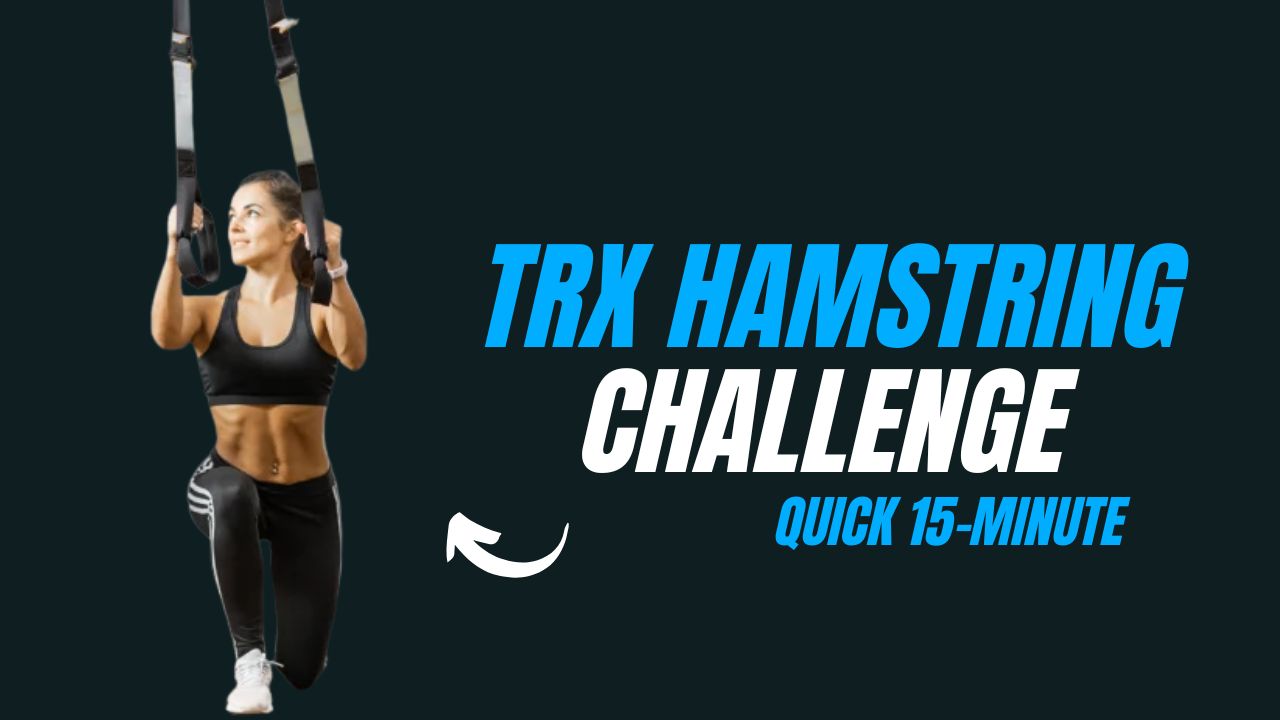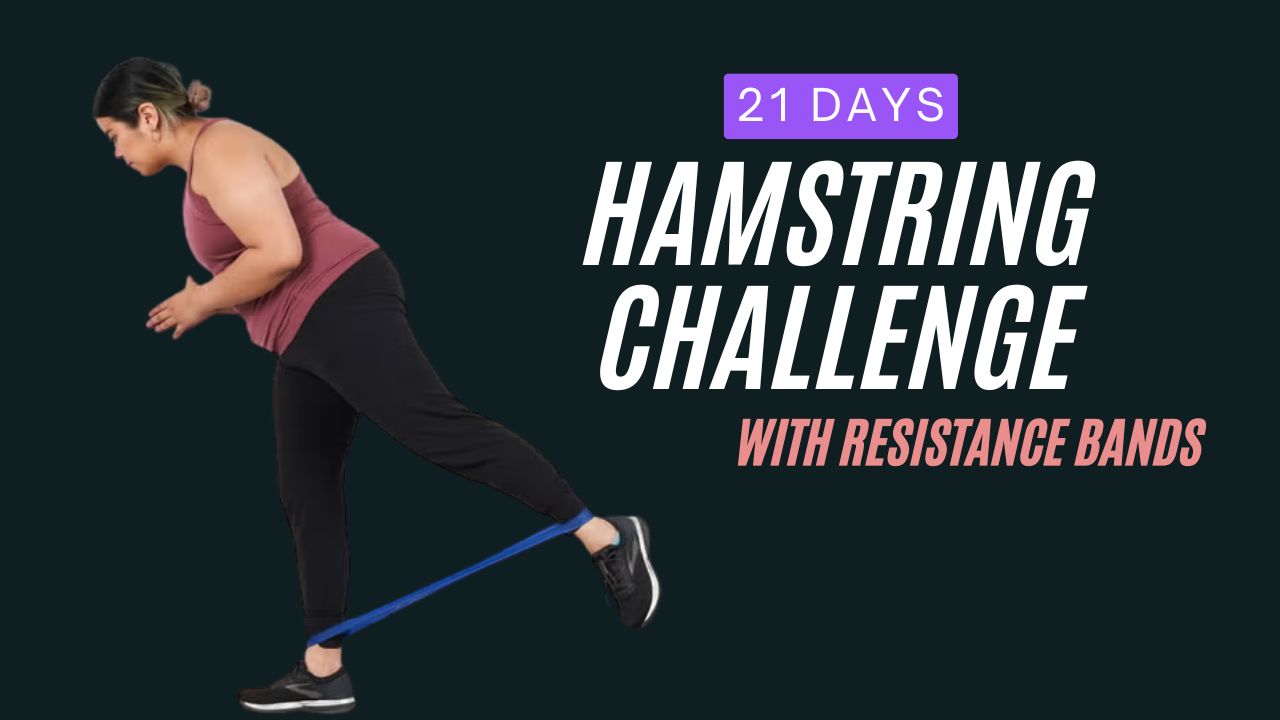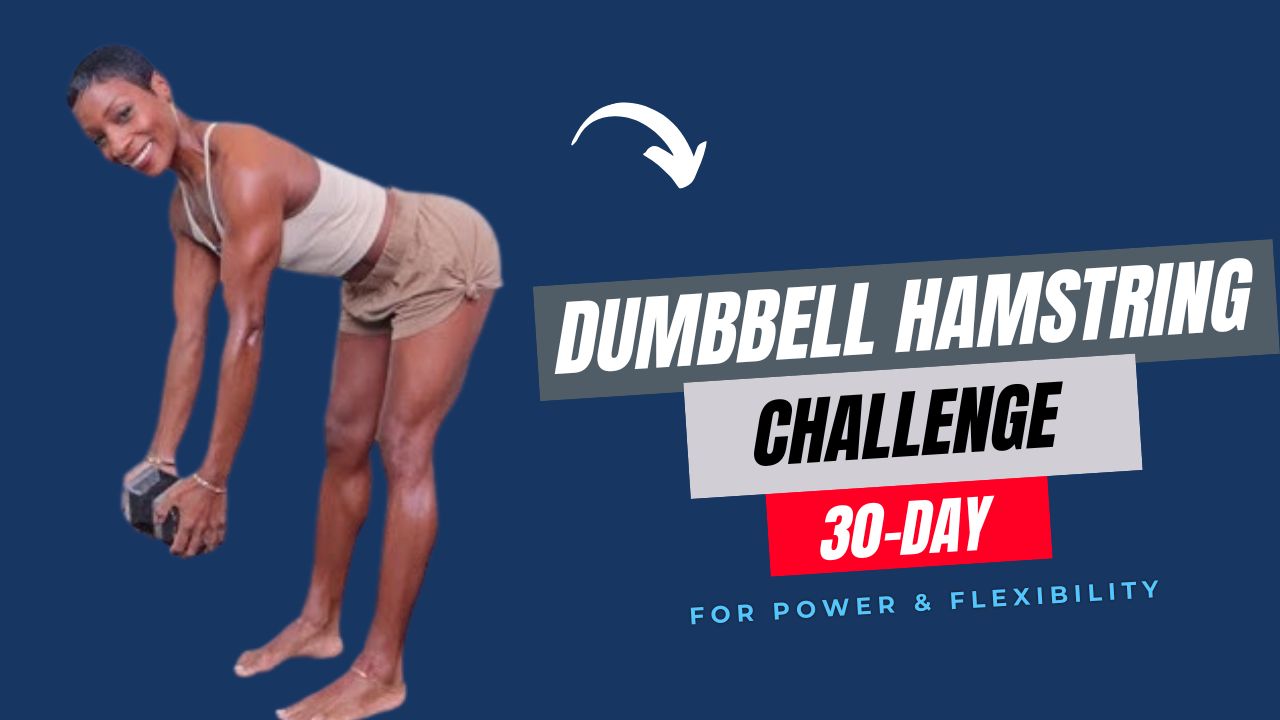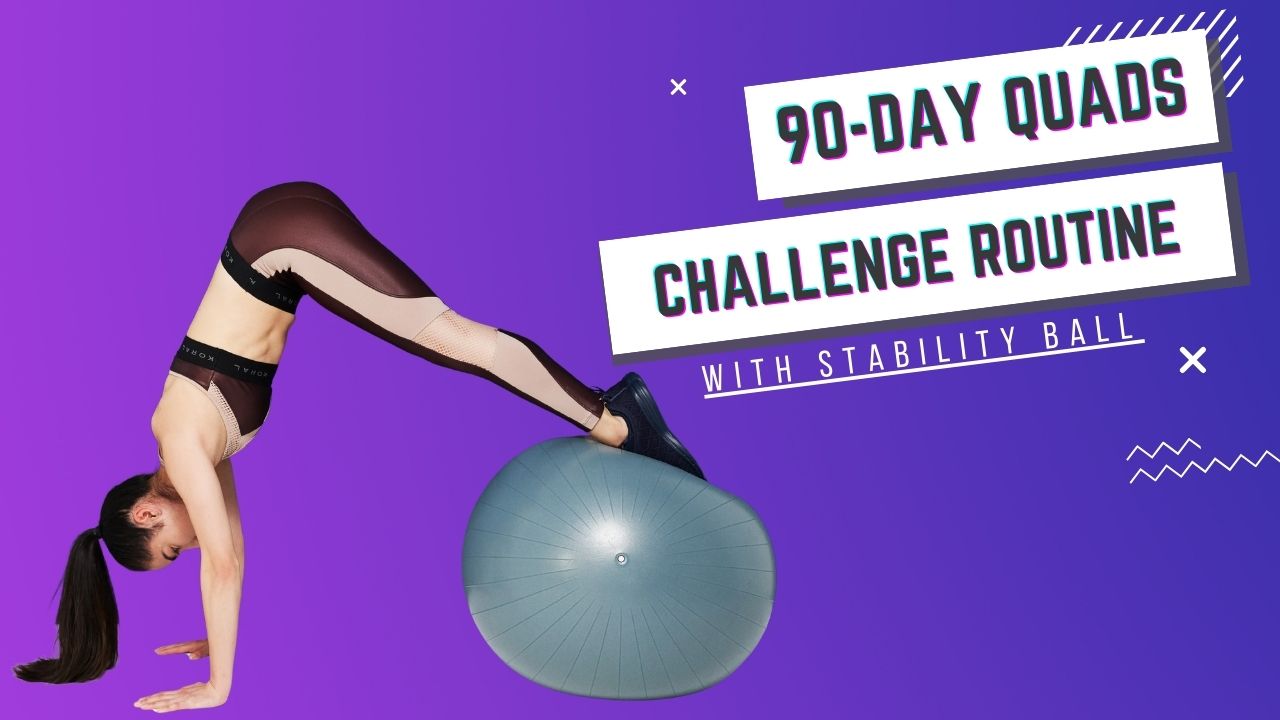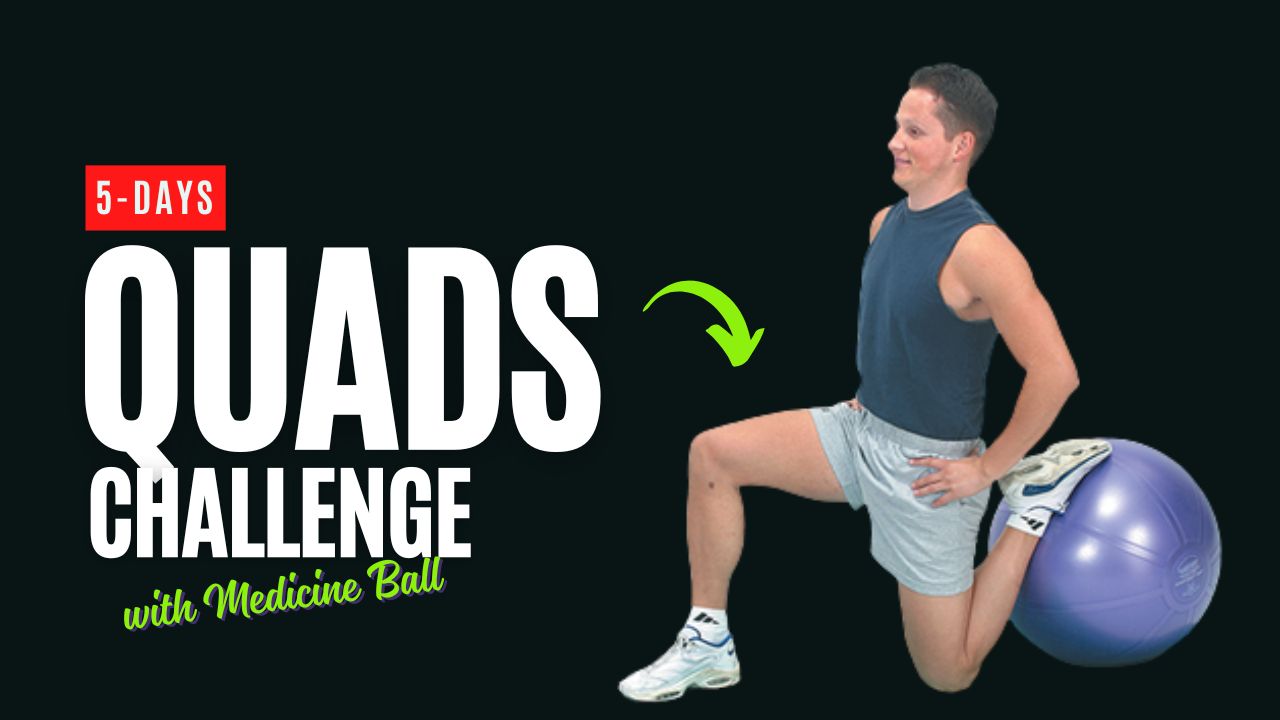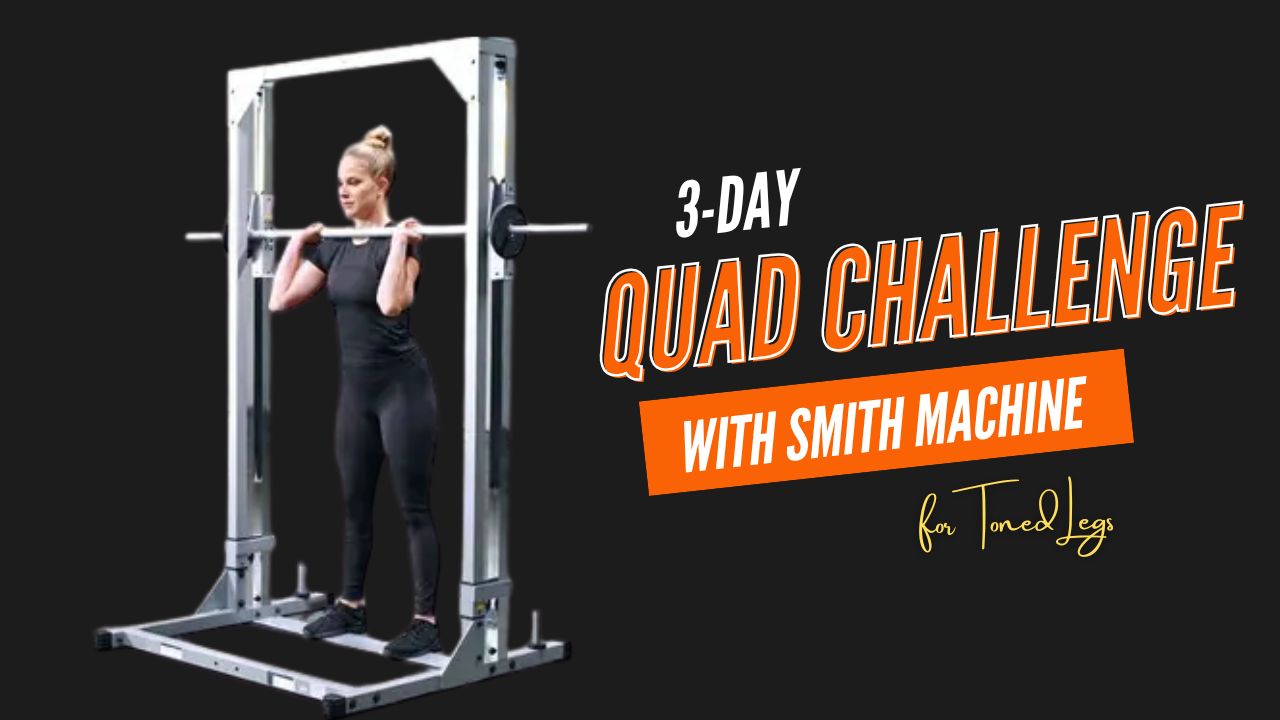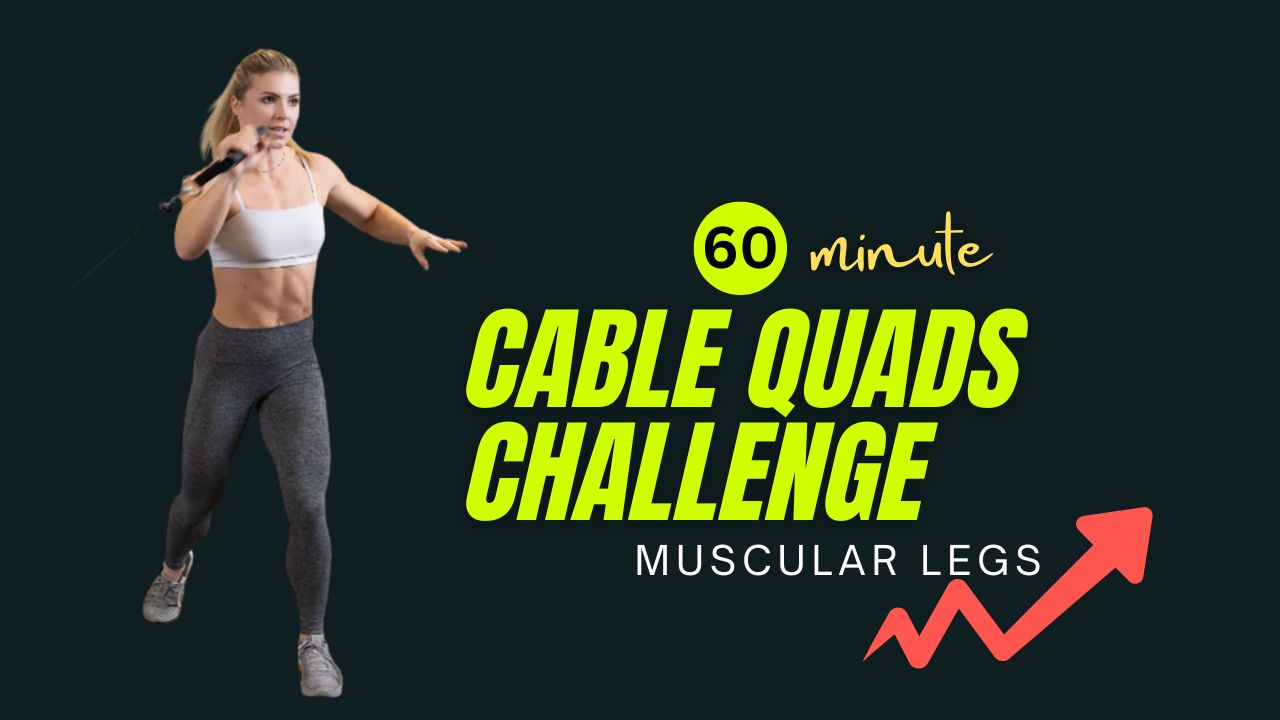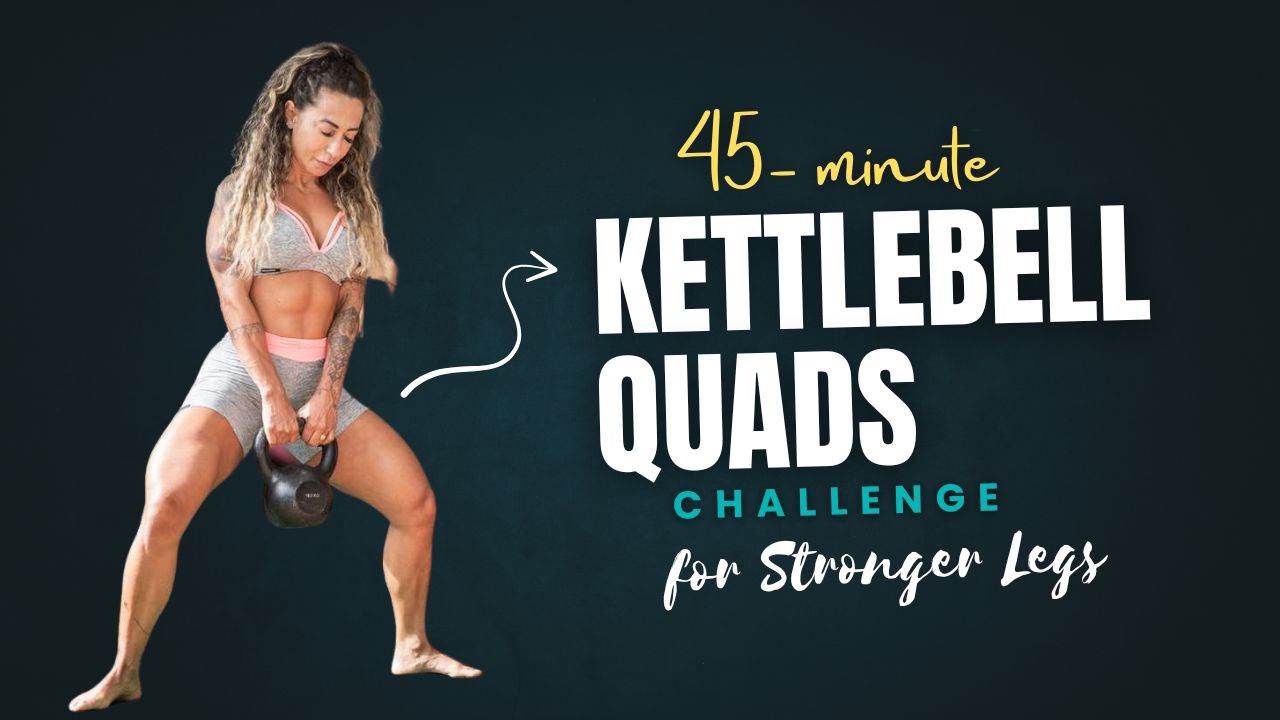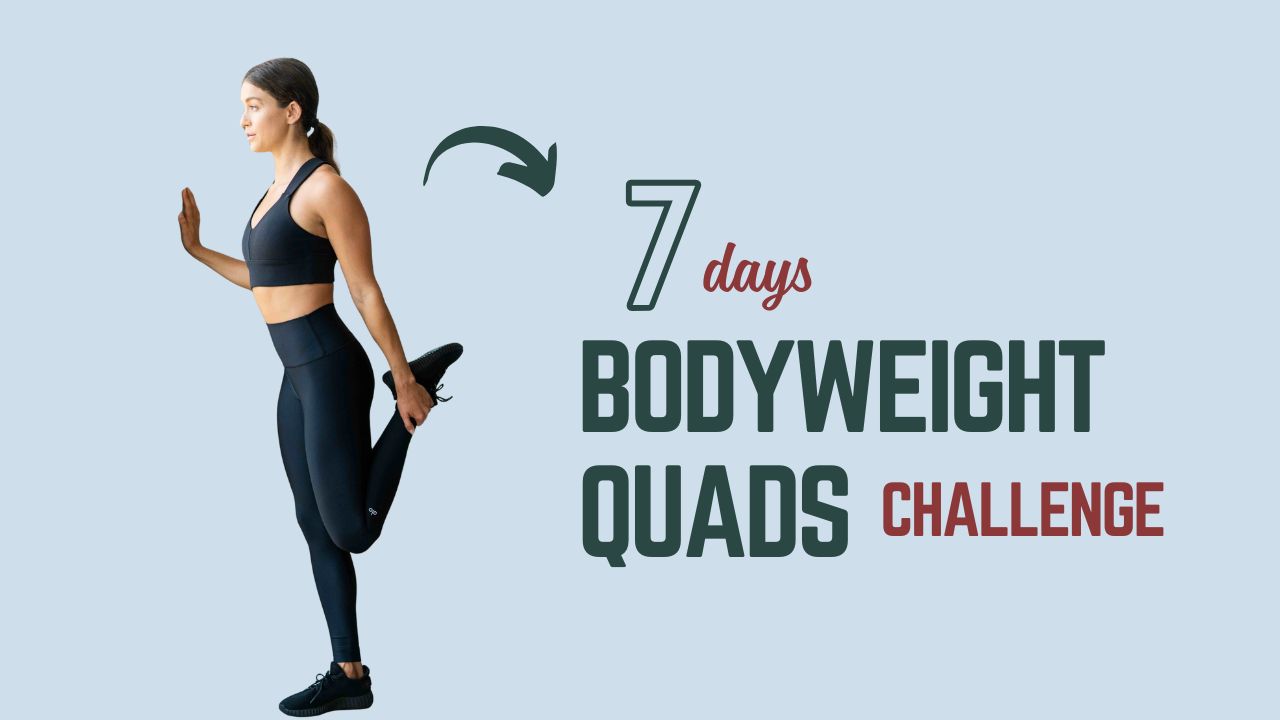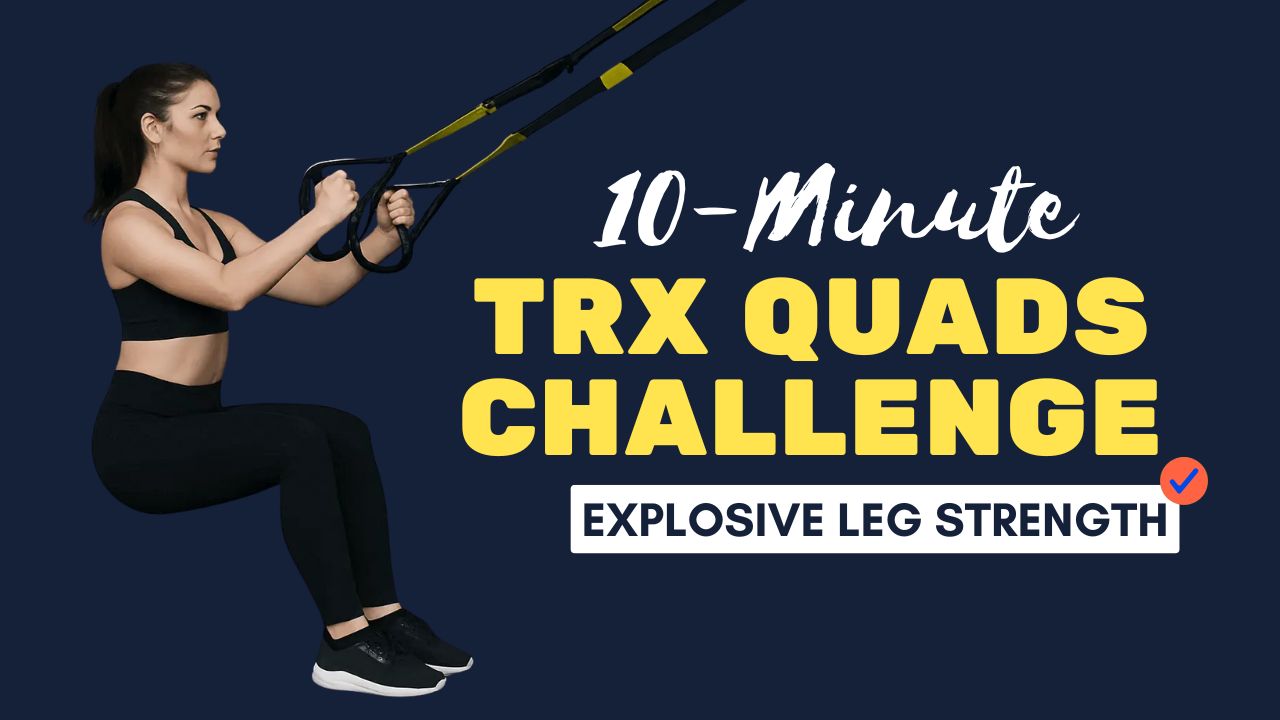Do you know that your quadriceps—the four large muscles at the front of your thighs—are not only crucial for powerful athletic movements but also play a vital role in protecting your knees from injuries?
These muscles are the engines behind your sprint speed, jumping ability, and even everyday movements like walking upstairs or standing up from a chair. Yet, many fitness enthusiasts either overtrain them with repetitive squats or undertrain them by ignoring direct isolation.
The 5-Day Medicine Ball Quad Challenge is designed to give your quads the focused attention they deserve, using one of the simplest yet most effective tools: the medicine ball.
This challenge blends functional strength, balance, and definition training into just five days, helping you build muscular legs while improving stability and core coordination.
Before we dive in, here’s a myth you might have heard: “Squats are enough to train your quads.” While squats are excellent, your quads respond best when challenged from multiple angles and with varied resistance. That’s where this medicine ball challenge comes in.
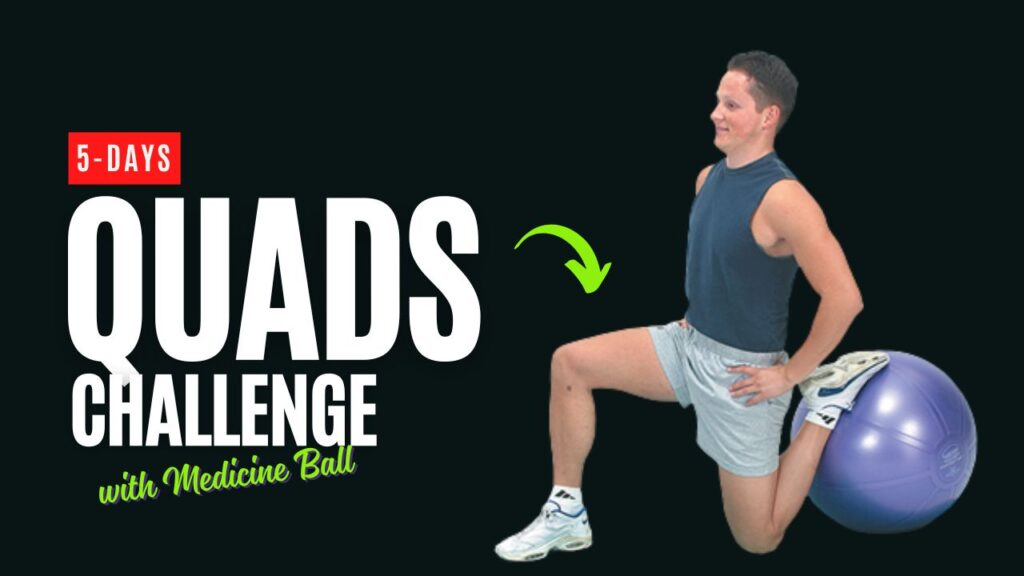
Table of Contents
Why Use a Medicine Ball for Quad Training?
Medicine balls may look old-school, but their effectiveness has stood the test of time. Unlike static weights such as dumbbells, medicine balls engage your stabilizers, demand core strength, and allow dynamic movements. This creates a functional workout that mimics real-life strength demands.
Benefits of using a medicine ball for quads include:
- Improved knee stability (by targeting supporting muscles).
- Greater quad activation due to dynamic movement.
- Added cardio effect when performing ball-based explosive exercises.
- Functional strength gains that carry over to sports and daily life.
What Can Happen After 30 Days of This Challenge
| Positive Outcomes | Why It Happens |
|---|---|
| Noticeable quad definition and muscle tone | Consistent progressive overload strengthens and shapes the muscles. |
| Improved knee stability and reduced risk of injuries | Stronger quads support the knee joint and improve alignment. |
| Increased lower-body strength and endurance | Repeated training builds muscular endurance and power. |
| Better performance in running, jumping, and sports | Stronger quads directly enhance explosive movements. |
| Enhanced balance and core stability | Medicine ball exercises engage stabilizing muscles. |
| Reduced leg fatigue in daily activities | Stronger quads make walking, climbing stairs, and lifting easier. |
| Boosted calorie burn and fat loss around thighs | High-intensity, multi-joint exercises raise metabolism. |
| Improved posture and overall athletic performance | Strong legs provide a solid foundation for the entire body. |
Do’s & Don’ts for the 5-Day Medicine Ball Quad Challenge
| Do’s | Don’ts |
|---|---|
| Warm up with 5–7 minutes of light cardio and dynamic stretching before starting. | Don’t skip the warm-up — cold muscles are more prone to injury. |
| Maintain proper squat and lunge form (knees aligned with toes, chest up). | Don’t let your knees cave inward during squats or lunges. |
| Start with a manageable medicine ball weight (6–12 lbs for most). | Don’t go too heavy if it compromises your technique. |
| Land softly during jump squats to protect your joints. | Don’t slam your feet down — this can strain your knees. |
| Focus on slow, controlled movements for maximum muscle activation. | Don’t rush through reps just to finish quickly. |
| Stay hydrated and fuel your body with protein-rich meals for recovery. | Don’t rely on junk food or skip meals during the challenge. |
| Take 1–2 minutes to cool down and stretch your quads post-workout. | Don’t skip cool-down stretches — tight quads can increase soreness. |
| Listen to your body — adjust reps or rest if needed. | Don’t ignore pain signals; pushing through pain may cause injury. |
The 5 Key Medicine Ball Exercises for Quad Development
Below, you’ll find each exercise broken down with descriptions and step-by-step “how-to” instructions.
1. Medicine Ball Squat Press
Description: This compound exercise combines a front squat with an overhead press, maximizing quad engagement while involving your shoulders and core.
How to:
- Stand with feet shoulder-width apart, holding a medicine ball at chest height.
- Inhale as you lower into a squat, keeping your chest lifted and knees aligned with your toes.
- Drive through your heels to return to standing while simultaneously pressing the medicine ball overhead.
- Lower the ball back to your chest and repeat.
Tip: Keep your weight in your heels for deeper quad activation.
2. Medicine Ball Step-Ups
Description: Step-ups build unilateral quad strength, balance, and stability. The medicine ball adds an extra load for intensity.
How to:
- Hold the medicine ball at chest level.
- Place your right foot on a sturdy bench or box.
- Drive through your right heel to step up, bringing your left foot to meet the right.
- Slowly step back down and repeat on the same leg, then switch.
Tip: Focus on slow, controlled steps to avoid using momentum.
3. Medicine Ball Lunge Twist
Description: This dynamic move targets quads and glutes while integrating a rotational core challenge.
How to:
- Stand upright with the medicine ball held at chest level.
- Step forward into a lunge with your right leg, lowering until both knees form 90-degree angles.
- Twist your torso over your front leg while keeping arms extended.
- Return to the center, push back to standing, and switch legs.
Tip: Keep your front knee directly above your ankle to protect joints.
4. Medicine Ball Wall Squats
Description: Isometric strength training at its finest, wall squats with a medicine ball teach endurance while building definition in the quads.
How to:
- Stand with your back against a wall, feet shoulder-width apart, and hold a medicine ball at your chest.
- Slide down into a seated position with thighs parallel to the floor.
- Hold this position for 30–60 seconds, keeping core tight.
- Slowly stand back up and repeat.
Tip: The longer the hold, the deeper the quad burn.
5. Medicine Ball Jump Squats
Description: A plyometric move that adds explosiveness and definition to your quads while elevating your heart rate.
How to:
- Stand with feet hip-width apart, holding the medicine ball at chest height.
- Lower into a squat position.
- Explosively jump upward, pushing the medicine ball slightly overhead.
- Land softly with knees slightly bent and immediately descend into the next rep.
Tip: Perform on a cushioned surface to protect joints.
Additional Medicine Ball Quad Variations (Optional)
- Medicine Ball Front Raise Squat – holding the ball and lifting it forward as you squat for extra shoulder and quad engagement.
- Side Step Squats with Medicine Ball – lateral movement to target inner and outer thighs alongside quads.
- Medicine Ball Bulgarian Split Squats – elevating the back leg for deeper unilateral quad focus.
Adding variety prevents plateaus and challenges your quads in different ways.
5-Day Medicine Ball Quad Challenge Routine
Now that you know the exercises, here’s how to structure your 5-day challenge. Each session takes about 25–30 minutes. Perform the routine on five consecutive days, then take two days off for recovery.
Daily Workout Format
- Warm-up: 5 minutes (light jog, dynamic stretches).
- Main Circuit: Perform each exercise for the prescribed sets/reps. Rest 45–60 seconds between sets.
- Cool-down: 5 minutes (quad stretches, foam rolling).
Challenge Routine (Table Format)
| Day | Exercises | Sets | Reps/Duration |
|---|---|---|---|
| 1 | Squat Press, Step-Ups, Lunge Twist, Wall Squat | 3 | 12 reps each (Wall squat: 45s hold) |
| 2 | Step-Ups, Jump Squats, Wall Squat, Lunge Twist | 3 | 12 reps each (Wall squat: 60s hold) |
| 3 | Squat Press, Bulgarian Split Squat (optional), Jump Squats, Wall Squat | 3 | 10–12 reps (Wall squat: 60s hold) |
| 4 | Lunge Twist, Side Step Squats, Squat Press, Step-Ups | 3 | 12 reps each |
| 5 | Combination Circuit (All 5 main exercises) | 3 | 10 reps each (Wall squat: 75s hold) |
Recovery and Nutrition Tips for Quad Growth
- Recovery: Your quads are large muscles and require rest. Sleep at least 7–8 hours per night and take rest days after completing the 5-day cycle.
- Nutrition: Fuel your muscles with protein-rich meals (lean meats, legumes, eggs) and complex carbs (sweet potatoes, oats) to support growth and repair.
- Hydration: Dehydration reduces performance and recovery. Aim for at least 2.5–3 liters of water daily.
Interesting Fact: Quads and Longevity
Studies show that people with stronger quadriceps tend to have better balance and mobility as they age. This reduces fall risk and supports long-term independence. By strengthening your quads today, you’re also investing in your health decades from now.
Conclusion: Keep the Momentum Going
Completing the 5-Day Medicine Ball Quad Challenge is an impressive achievement. In just under a week, you’ve given your quads a powerful stimulus, tested your endurance, and developed better balance and strength. By now, you should notice stronger thigh activation in daily movements and improved stability in workouts.
But here’s the key: results don’t come from a single challenge—they come from consistent practice. To continue building on your progress, you can:
- Repeat the challenge: Take two days of rest after Day 5, then start the cycle again for another round.
- Progress the difficulty: Increase the weight of your medicine ball, extend wall squat hold times, or add an extra set to each exercise.
- Expand the focus: After completing 3–4 rounds of this challenge, mix in a Medicine Ball Lower Body Program that also targets hamstrings, glutes, and calves for complete leg development.
Think of this challenge as a starting point. Over time, as your quads grow stronger, your performance in running, jumping, squatting, and even everyday tasks will dramatically improve.
Keep pushing, keep progressing, and remember—strong quads don’t just shape powerful legs, they create a stronger body overall.
Frequently Asked Questions (FAQs)
Can beginners do the 5-Day Medicine Ball Quad Challenge?
Yes, beginners can safely start this challenge. Just choose a lighter medicine ball (4–6 lbs) and focus on proper form before increasing weight or reps.
How heavy should my medicine ball be for quad exercises?
Most people do well with 6–12 lbs. If you’re more advanced, you can use a heavier ball (12–20 lbs), but make sure you can maintain correct form.
Do I need to do all five days in a row?
Yes, the plan is structured as a 5-day consecutive challenge. However, if you feel too sore, it’s okay to insert a rest day and extend the challenge over six or seven days.
Will this challenge make my legs bulky?
Not necessarily. These exercises help build definition, strength, and endurance. Bulky growth usually requires heavier loads and a calorie surplus, while this program is designed for toning and functional strength.
Can I combine this with other workouts?
Yes, you can. Pair it with upper-body or cardio training, but avoid heavy leg workouts on top of this challenge to prevent overtraining.
How soon will I see results?
You may notice improved quad activation, stability, and strength within the first week. Visible muscle definition usually becomes noticeable after 3–4 weeks of consistent training combined with proper nutrition.
Is this challenge suitable for people with knee issues?
If you have existing knee problems, consult a doctor or physiotherapist first. You can modify moves (for example, doing partial squats instead of jump squats) to reduce strain.
What should I eat during the challenge?
Prioritize lean proteins, complex carbs, and plenty of hydration to support muscle recovery. Avoid highly processed foods that slow recovery and energy levels.
Can I do this challenge without a medicine ball?
Yes, but it won’t be as effective. You can substitute with a dumbbell, kettlebell, or even a weighted backpack, though the ball’s versatility makes it ideal.
What should I do after completing the 5-day challenge?
You can repeat the challenge, progress with heavier loads, or move into a longer-term leg program that balances quad work with hamstrings, glutes, and calves.
